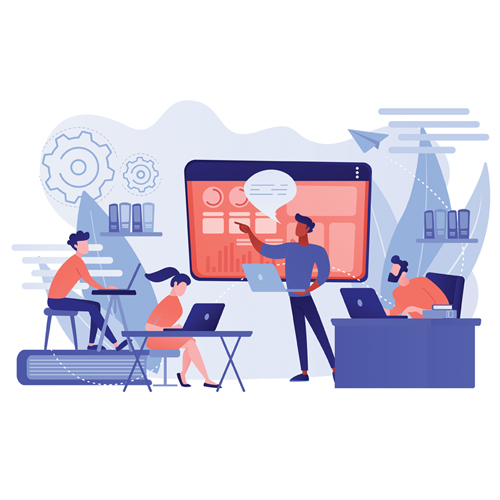Early stage engagement at the heart of project development

Interview with Adeel Aslam, Technical Director, Bouygues Energies & Services, Contracting
Listening to and understanding the client needs and adopting a flexible approach backed up by our in-house design teams are the most valuable components in delivering a successful cleanroom, laboratory or industrial project. Adeel Aslam, Technical Director, Bouygues Energies & Services Contracting, will explain why through early-stage engagement we can assist our clients in a successful project development.
What is the secret to developing a successful design?
At Bouygues Energies & Services, we commence working with our clients through early business engagement and strategic business consulting stages. We do this by understanding client’s and stakeholder’s needs, objectives and expectations from an early stage. We can provide sustainable scale-up strategies which are supported by our in-house design team and provide build solution capabilities for the pilot plant, demonstrator and full-scale manufacturing facilities.
With our unique approach, we can develop solutions from an early feasibility/concept stage. This streamlines the assessment and selection of suitable technologies for the process; both existing and emerging. During further design development, we maintain a key focus on lean manufacturing and asset lifecycle modelling, whilst considering future business needs. The result is investment programmes which deliver the highest return on investment from day one.
How would you kick-start a new project using a Front-End Engineering Design (FEED) study approach?
Before kick-starting a new project, we need to clearly understand the client’s / stakeholder’s objectives, targets and expectations. Working in this way allows us to offer a bespoke solution to fit their requirements. We do not believe in a ‘one size fits all’ approach. All our FEED studies are tailored specifically for our client’s needs to ensure that the project critical success factors are delivered. Whether or not a project brief exists, the design studies are aimed at reviewing, questioning and implementing all the project/design requirements in a structured format.
To understand our client and deliver to their expectations, we build the FEED study around a set of client/design team interactive data gathering workshops. During these workshops, all key project stakeholders are present and allowed critical input into the development and understanding of project requirements.
Workshops are aligned to suit the type of project being undertaken and commence with an architectural review where the project brief will be developed. Also, the main facility process flows will be drawn out from first principles.
What are the key benefits of engaging at the early stage?
From our experience, when we are engaged from the early stage of a project’s development, we can help transform our client’s science, ideas and vision into commercial reality. We do so in an accelerated and collaborative way, whilst de-risking technology investments. This is supported by our unique consultancy “in-house” offer and approach, with single point accountability.
We are involved in a wide range of sectors, including Industrial Manufacturing, Pharmaceutical, Lifesciences. So, we can transfer the knowledge, experience and interchange ideas and innovations into other sectors such as Industrial Biotechnology. In a highly collaborative way, we share, transfer and connect knowledge utilising open innovation models.
We have found that the involvement and early stage engagement bring exceptional value for both us and clients. This approach also brings us close and allows us to create a strong collaborative relationship.
How do you keep your methods agile and innovative in an ever-changing landscape?
We regularly review our offer/approach and complement it with the latest tools and technologies. We have utilised the latest design software and introduce technologies that can enhance our customer experience.
For the last 10 years, we have deployed 3D walkthroughs, and recently we have introduced VR/AI into our solutions. We are constantly thriving to deploy new technologies and design software that can enhance our customer experience.
We also have an approach of continuous learning and open innovation; we keep informed of changing regulatory and statutory requirements by regularly attending a wide range of forums and play an active role in several industry networks.
We strive to keep up to date with the ever-changing landscape of industrial processes and technologies by continuing to build strong relationships with our key value chain partners.





















